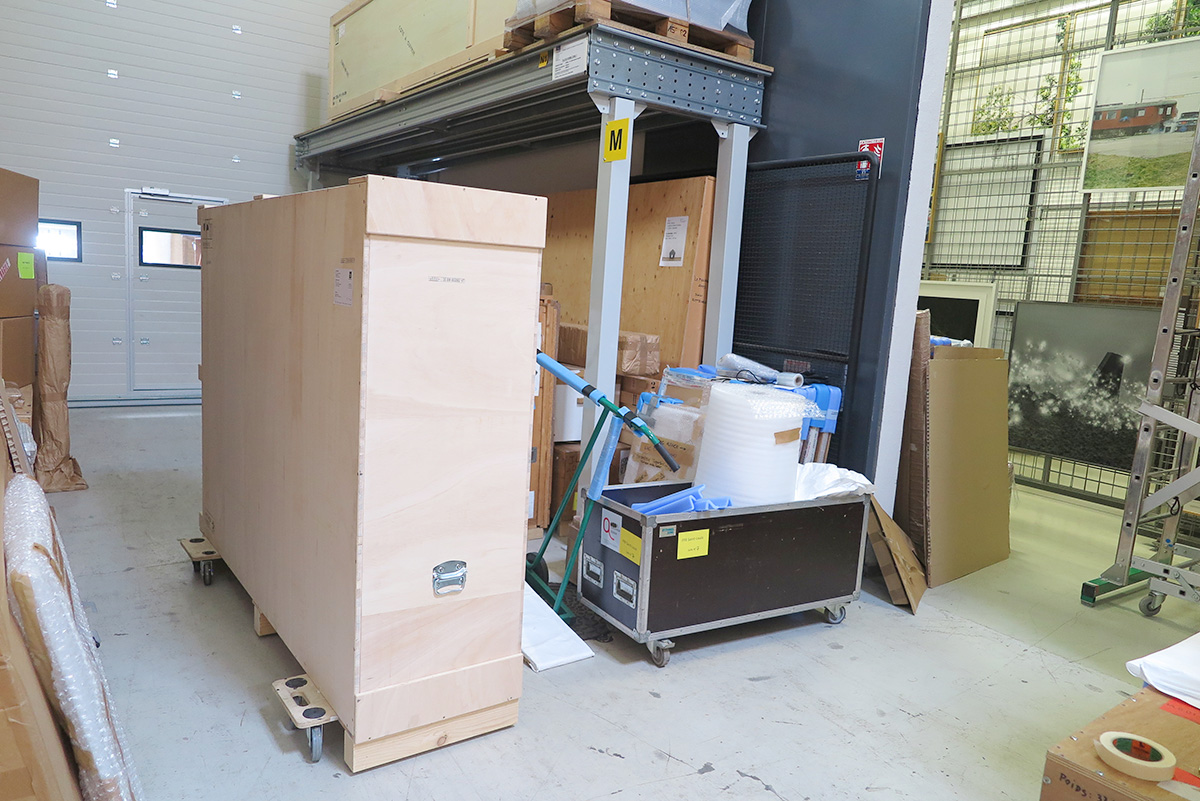
The nomadic life of the works in the collection, their passage from a dormant state in the storerooms to various contexts of presentation and exhibition outside the walls, as well as the diversity of techniques employed in today’s creation, require a significant amount of conservation and restoration work on the collection.
Preventive conservation and restoration
The material heterogeneity of contemporary artworks (use and evolution of materials, conservation of different supports, installations, etc.) raises new questions in terms of conservation.
The different paths of transition and destination, the increase in transport and handling associated with loans for exhibitions, as well as variations in climatic and hygrometric environments are all sources of danger for the works.
In 2001, an initial partial inventory and restoration program for the paintings in the collection was launched, followed in 2004 by a comprehensive preventive conservation plan for the collection. Their aim is to anticipate as far as possible any damage the works may suffer, and to facilitate restoration work by applying the principle of reversibility.
The years 2007 and 2008 were then devoted to a major overall inventory and recoiling of the works, in order to provide an up-to-date overview of the collection. This was made possible by a redefinition of the resources allocated to the management of the collection, and led to the creation of the position of collection manager in 2009, now ensuring better monitoring of the works in compliance with the various technical recommendations relating to the conservation of the collection.
This policy, encouraged by the Ministry of Culture and Communication / DRAC Alsace and the Alsace Region, also takes into account the deterioration of certain items in the collection. Following the comprehensive inventory mentioned in the previous paragraph, it was decided to launch a three-year restoration program, from 2008 to 2010, based on a study of targeted and imperative needs.
ART RESERVES
FRAC Alsace’s art reserves comprise three separate areas covering a total surface area of 650 m². Following on from the first partial inventory and restoration program for paintings in the collection, carried out in 2003 in partnership with the Conseil Régional d’Alsace and the Ministère de la Culture et de la Communication / DRAC Alsace, in the 1st half of 2005 the Agence culturelle / FRAC Alsace undertook a major refurbishment of the storerooms, including the installation of a humidity control and air-conditioning system in line with current conservation standards.
Collection management
Documentation, technical control, inventory and recolement are the tools used to manage the collection. To complete these actions, the FRAC Alsace joins the Videomuseum network of public collections of modern and contemporary art, a national database gathering information on the collections of national, regional, departmental or municipal museums, the Fonds National d’Art Contemporain (FNAC), FRACs and foundations.
Videomuseum makes it possible to track the movements and evolution of these collections in detail. It has also developed dynamic methods and tools using new information processing technologies, in order to identify and better disseminate this museographic heritage.